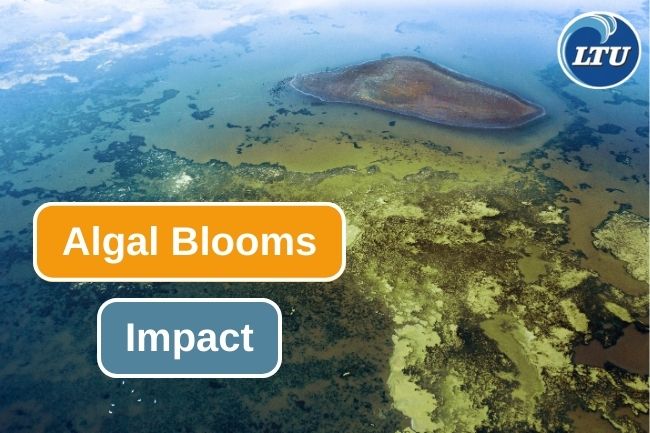5 Impact That Algal Blooms Caused
By. Nevanda - 07 Jun 2023
lauttimur.com - Algal blooms can have significant effects on ecosystems, disrupting the balance and functioning of aquatic environments. Here are some of the key impacts:
1. Oxygen Depletion
Algal blooms can lead to oxygen depletion in water bodies. During the bloom, algae undergo rapid growth and reproduction, and when these algae die and decompose, bacteria and other microorganisms consume oxygen while breaking down the organic matter. This process can deplete oxygen levels in the water, creating "dead zones" where aquatic organisms, including fish and other marine life, struggle to survive.
Read also: Here Are 10 Fishing Gear To Catch Squid
2. Harm to Aquatic Life
Algal blooms can harm or even kill aquatic organisms. The dense accumulation of algae can block sunlight from penetrating the water, reducing the availability of light for submerged plants, such as seagrasses, which are important habitats and food sources for many species. Additionally, some algal species produce toxins known as harmful algal toxins (HATs). These toxins can be harmful to fish, shellfish, and other marine organisms, leading to fish kills and mass mortality events. Filter-feeding organisms, such as mussels and clams, can accumulate these toxins, making them unsafe for human consumption.
3. Disruption of Food Chains
Algal blooms can disrupt the natural food chains in aquatic ecosystems. They can outcompete other primary producers, such as phytoplankton and submerged plants, for nutrients and light. This can lead to shifts in species composition and abundance, affecting the availability of food for higher trophic levels, including zooplankton, fish, and other predators. Some algae, particularly cyanobacteria (blue-green algae), are less nutritious and less suitable as food sources for many aquatic organisms, further disrupting the food web dynamics.
Read also: These Are 10 Things To Do To Save Marine Ecosystem
4. Altered Water Chemistry
Algal blooms can alter the chemical composition of water. During their growth, algae absorb nutrients, particularly nitrogen and phosphorus, from the water column. When these algae die and decompose, they release nutrients back into the water, potentially leading to eutrophication—a condition of excessive nutrient enrichment. Eutrophication can cause further algal blooms and exacerbate water quality problems, such as increased turbidity and reduced clarity.
5. Economic Impact
Algal blooms can have significant economic impacts. They can damage commercial and recreational fisheries by causing fish kills and contaminating shellfish beds with toxins. This can lead to economic losses for fishing industries and recreational activities such as boating, swimming, and tourism. Moreover, the treatment and management of drinking water supplies affected by algal toxins can be costly for water utilities and communities.
Efforts to prevent and manage algal blooms are essential to protect the health and functioning of aquatic ecosystems. By reducing nutrient pollution, implementing proper wastewater treatment, and promoting responsible land and water management practices, we can mitigate The negative impacts of algal blooms and preserve the integrity of ecosystems.
Read also: Try This Easy Steps To Clean Fresh Clams








